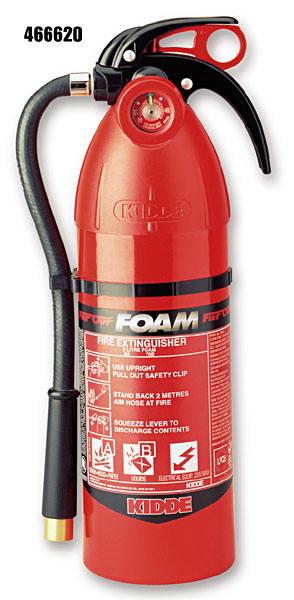Thank you for your detailed explanation of what you experienced as well as your candidness. For those of us who are in the fire service and/or do it for a living (fire protection engineering), we honestly think about fire safety all the time. It is said that everyone will have two experiences with the fire department (fire) in their lifetime. I think that this experience will only help keep fire safety in your mind.
So, fire extinguishers. There was a decent article in the Spring 2012 edition of Overland Journal entitled "We Set a Land Rover on Fire in an Attempt to Learn About Fire Safety and Prevention". This could be a good starting point.
The National Fire Protection Association (NFPA) Standard for Portable Fire Extinguishers, NFPA 10, will tell you more than anyone really wants to know about types, size, hazards, whatever, and not really what people want or need to know for their 4-wheeling/overland application.
Whenever I see stove set-ups attached to vehicles and propane tanks near the gasoline fills, I tend to get a little nervous. Especially if you need to go past the stove to get to the roll bar mounted extinguisher. I tend to lean more towards the folding camp table and portable stove AWAY from my ride home.
I would carry the largest fire extinguisher you can accommodate, which in our world is not always practical. Smaller 2.5lb extinguishers "fit" where we want them, but we seem to always have room for the 10 and 15 pound Co2 cylinders for filling up tires. It will never happen to us.......
Anyhow, I would look for a fire extinguisher with a metal body and neck/handle. These can be recharged. The extinguisher will list the classes of fire it can extinguish (A - ordinary combustibles like Land Rover Technical Manuals, B - flammable liquids like gasoline, and C - electrical fires). Flammable metals (class D) and kitchen cooking oils (class K) don't really apply here unless you have a deep fat fryer in the back of your old VW with a magnesium engine block. "Hefting" your fire extinguisher periodically will help ensure the dry chemical powder will not harden. Co2 extinguishers are easily identifiable by the "bell" on the end of the nozzle. These are also useful in cooling down beverages quickly.
The numbers in front of the letters (ex.
2A
10BC) let the user know the rating size of the fire the extinguisher can put out. In this example 2A would put out a 10' X 10' wood panel or 25 sq. ft. of flammable liquid. Not as effective as you may think - especially when something is fully involved.
Fire loves oxygen and opening up a Land Rover hood

can help an engine fire increase as well as increase the potential for burns to your hands and eyebrows.
I carry two MaxOut
http://www.h3rperformance.com/mx250r.htm extinguishers with me.
You can learn more about fire safety at your local fire department, YouTube training videos, or at seminars at some of the Expo classes which are held. Like MTSN said - dress for the crash, not the ride. Stay safe out there.

